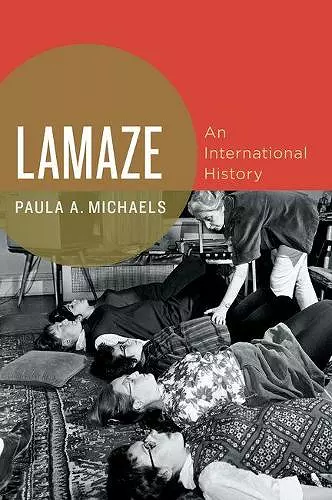Lamaze
An International History
Format:Paperback
Publisher:Oxford University Press Inc
Published:20th Apr '17
Currently unavailable, and unfortunately no date known when it will be back
This paperback is available in another edition too:
- Hardback£39.99(9780199738649)

The Lamaze method is virtually synonymous with natural childbirth in America. In the 1970s, taking Lamaze classes was a common rite of passage to parenthood. The conscious relaxation and patterned breathing techniques touted as a natural and empowering path to the alleviation of pain in childbirth resonated with the feminist and countercultural values of the era. In Lamaze, historian Paula A. Michaels tells the surprising story of the Lamaze method from its origins in the Soviet Union in the 1940s, to its popularization in France in the 1950s, and then to its heyday in the 1960s and 1970s in the US. Michaels shows how, for different reasons, in disparate national contexts, this technique for managing the pain of childbirth without resort to drugs found a following. The Soviet government embraced this method as a panacea to childbirth pain in the face of the material shortages that followed World War II. Heated and sometimes ideologically inflected debates surrounded the Lamaze method as it moved from East to West amid the Cold War. Physicians in France sympathetic to the communist cause helped to export it across the Iron Curtain, but politics alone fails to explain why French women embraced this approach. Arriving on American shores around 1960, the Lamaze method took on new meanings. Initially it offered a path to a safer and more satisfying birth experience, but overtly political considerations came to the fore once again as feminists appropriated it as a way to resist the patriarchal authority of male obstetricians. Drawing on a wealth of archival evidence, Michaels pieces together this complex and fascinating story at the crossroads of the history of politics, medicine, and women. The story of Lamaze illuminates the many contentious issues that swirl around birthing practices in America and Europe. Brimming with insight, Michaels' engaging history offers an instructive intervention in the debate about how to achieve humane, empowering, and safe maternity care for all women.
Shortlisted for the General History Prize for the 2014 New South Wales Premier's History Awards
Michaels has managed the enviable feat of producing a comprehensive scholarly review that is both accessible and engaging. She draws on the disciplines of sociology, psychology, and political science to situate the startling history of Lamaze within the political imperatives of the postwar Soviet Union, France, and the United States. ... Lamaze: An International History is an excellent example of interdisciplinary history, situating historical facts within the sociological and political framework of each time and culture in which it became established. * Journal of Interdisciplinary History *
Lamaze may be a household word in the United States but few if any of the many pregnant women who have used the technique know its surprising international history. Originating in the Soviet Union during the Cold War, subsequently enjoying a temporary popularity in France, the Lamaze method found an enduring home only in the United States. Paula Michaels explains why. In recognizing that medicine is far from a dispassionate science and that the political, economic, and cultural institutions within countries constantly shape and reshape medical practice, Michaels brings to life the fascinating history of a childbirth preparation method that transformed the attitudes of multiple generations of women toward giving birth. * Jacqueline H. Wolf, author of Deliver Me from Pain: Anesthesia and Birth in America *
A compellingly written history of an enormously popular method of childbirth, this narrative takes readers from the city of Kharkov in the 1930s, to Paris in the 1950s, and finally to the United States up into the 1970s. How this method traveled across borders and even the Iron Curtain is remarkable and beautifully conveyed here. Perhaps even more extraordinary is the fact that a process promoted by Stalin and his supporters could come to symbolize American women's liberation in the 1970s. While a work of history of medicine, this is also clearly a transnational history, a social history, a political history, and an intellectual history. * Wendy Kline, author of Bodies of Knowledge: Sexuality, Reproduction, and Women's Health in the Second Wave *
In her superb history of the Lamaze - or more accurately, the psychoprophylactic - technique, Paula Michaels shows how transformations in the management of childbirth also mediated the international and domestic rivalries of Cold War politics. ...Michaels has succeeded in producing an innovative, refreshing and insightful book. * Reviews in History *
- Winner of Winner of the 2015 Frances Richardson Keller-Sierra Prize from the Western Association of Women Historians Honorable Mention for the 2014 Heldt Prize for Best Book in Slavic Women's Studies from the Association for Women in Slavic Studies Shortlisted for the General History Prize for the 2014 New South Wales Premier's History Awards.
ISBN: 9780190675103
Dimensions: 231mm x 155mm x 18mm
Weight: 386g
264 pages